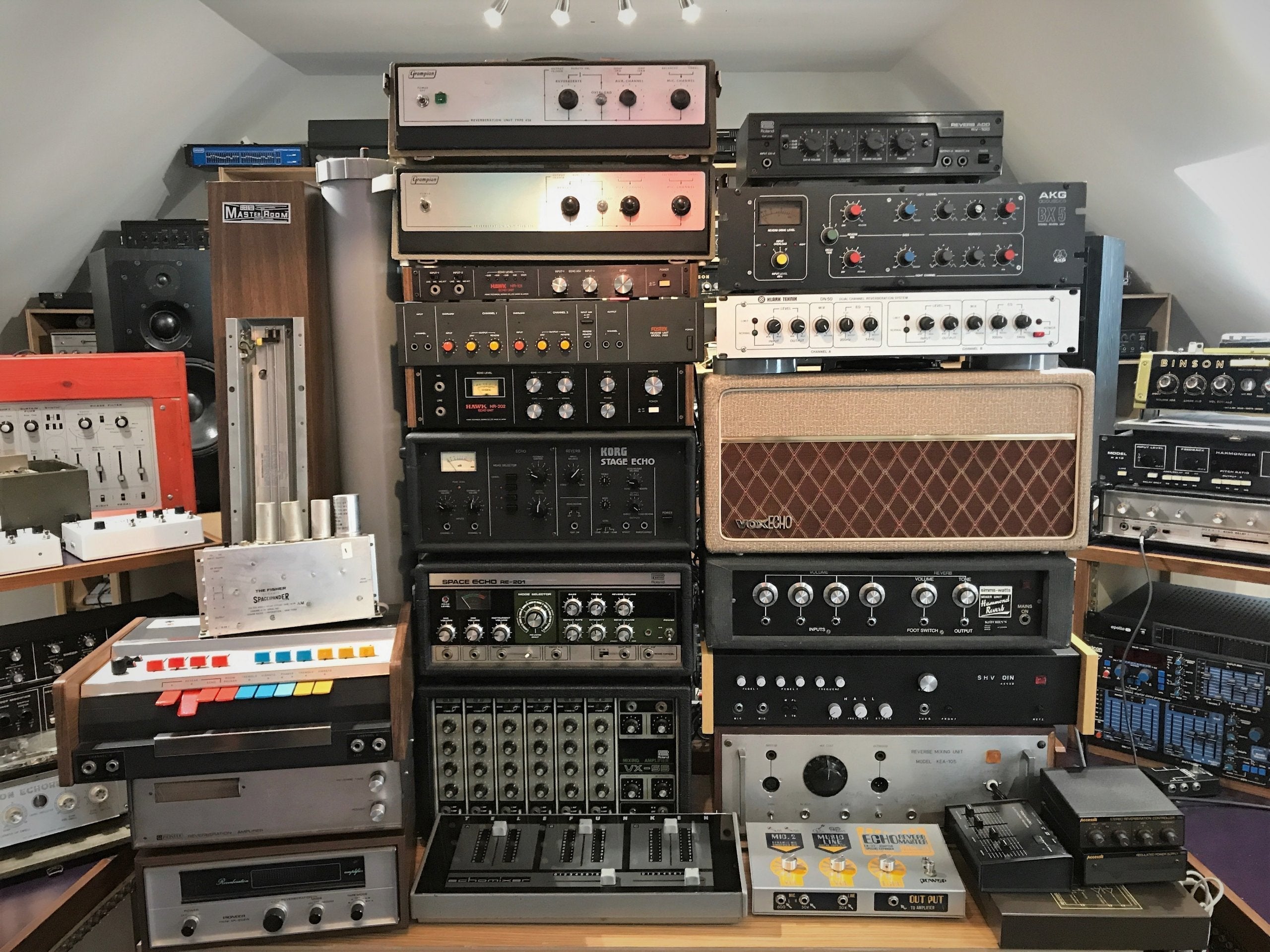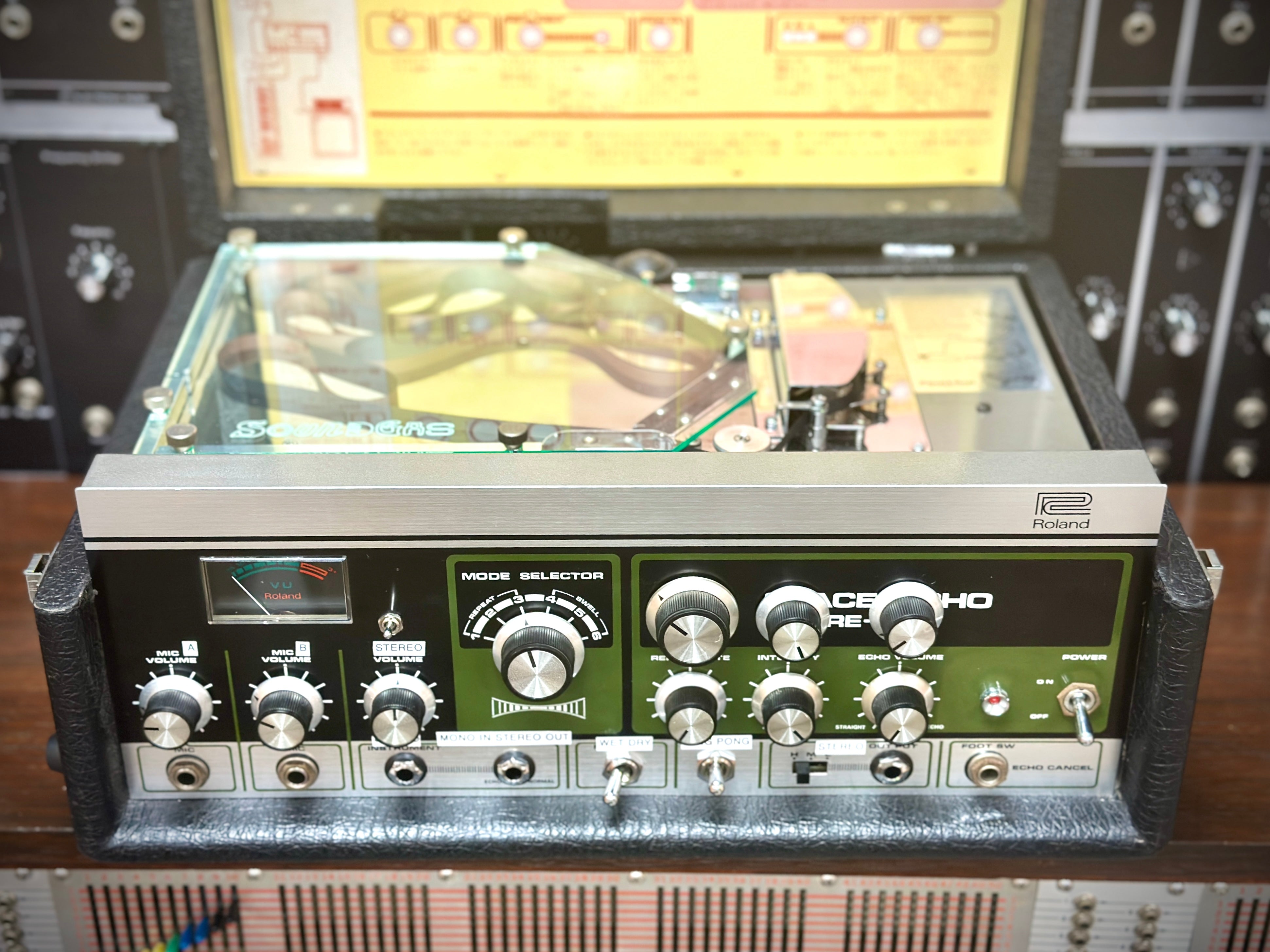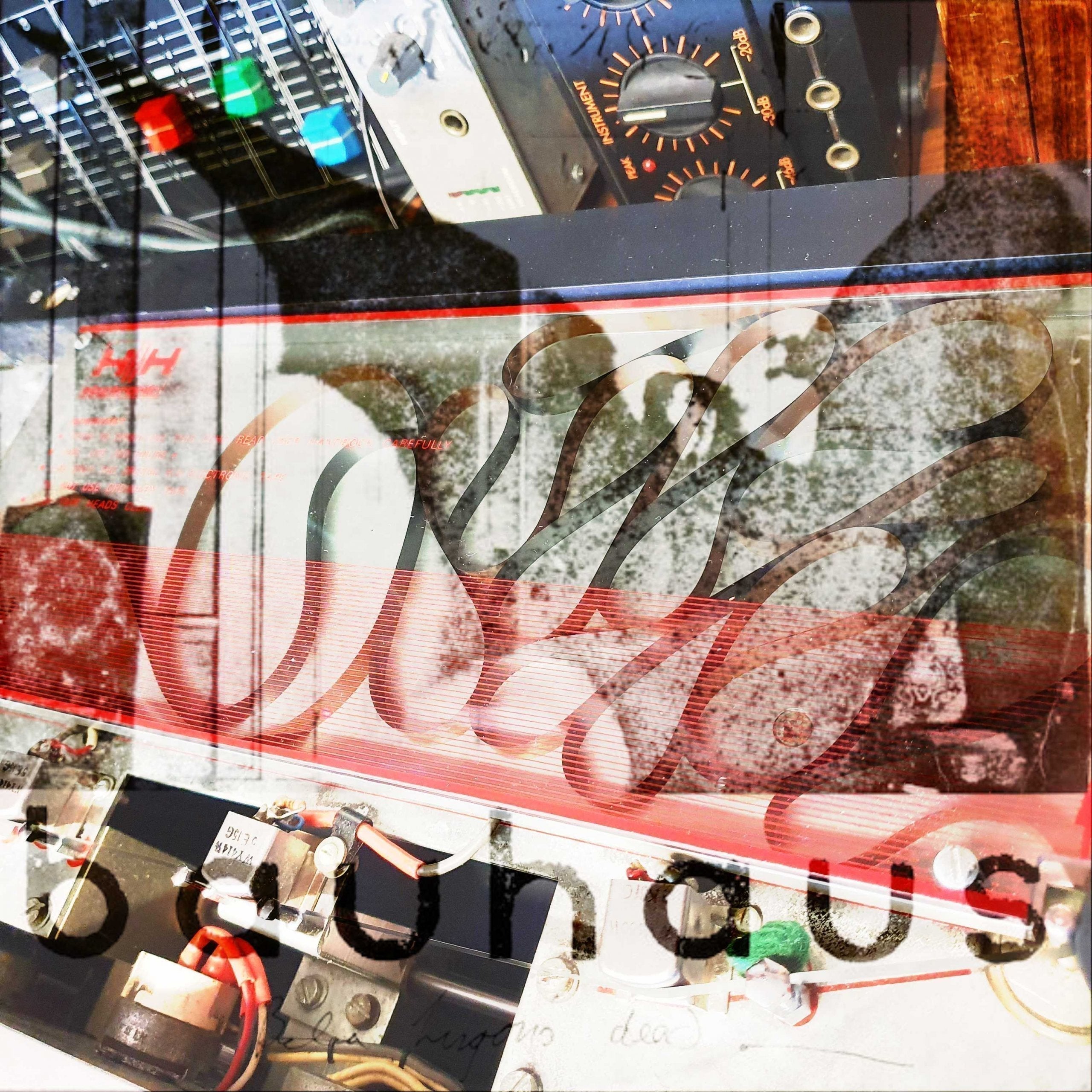
Revealed: The Formula Used By Roland For Tape Echo Loops
The final chapter in the very long tale of our quest to find out what tape to use in our Roland (and other) tape echoes. Spoiler alert: we reveal what the formula is…
If you want to know how we got here and have even more questions about tape answered, this blog follows on from our “Which is the Best Tape to Use in a Roland Echo” resource and will be added to that shortly.
Buy our tape loops for Rolands, Korgs and more.
What formula tape did Roland use for their tapes for Space and Chorus echoes? What’s the best tape echo tape available online? An internet search for these questions will take you to various answers on various forums, answers which vary widely in just how wrong they are (ditto for the majority of replacement tape loops it will suggest you buy – caveat emptor!). The bottom line is that most people simply do no know, and nobody has offered the definitive answer (not even Roland, because we asked when we met Roland CEO Jun-Ichi Miki back in 2017). Not that is, until now.
Feels like we should be opening a golden envelope or something 🙂
However, knowing the formulation is barely half the battle. Finding stock in usable condition is a far from trivial matter (doubtless one reason many suppliers use whatever they can source easily, no matter the performance or cost to your machine) as we discovered. Our excitement at winning an ebay auction in the UK for a reel of 156 – which came in the correct box and on a Scotch spool – was short-lived when it arrived containing what was obviously a different type of tape from that shown on the box!
We were cautiously optimistic when we found a promising looking stash from a radio station in a dry part of the USA. As soon as it landed we unspooled a short length which revealed it to be visually identical to RT-1L. Loops were made for testing and there was cause for celebration: the performance was excellent! It was a mixed box – most had been used at least once – but all the reels seemed to be in good condition. We contacted the seller to ask if any more might be found. The seller was back in touch a couple of weeks later to say he’d found another box of reels which we also purchased.
We’ve found this tape to work well in a variety of machines – it’s a drop in replacement for Korg Stage Echoes and also works well in our beloved HH Slider Echo (which usually prefers a thicker tape – see our previous blog). It should also be good for reloading Echoplex or Fulltone cartridges (not a service we can currently offer, sorry). We’ve made short loops for Hawk and Dynacord echoes that run very well indeed and at some point we hope to start widening the range of tape loops we supply to give people a reliable alternative to the many less than stellar options currently available.
So now we had successfully identified the formulation but had to resign ourselves to working with lightly used tape rather than brand new – not ideal, but better than using incorrect stock to begin with. However, within only a matter of weeks of our US find, I discovered and purchased (at considerable expense) three boxes of unused stock in Japan.
THE WEAKEST LINK?
The quality of splice is critical to performance: the greater the gap, the more audible the splice becomes. If you’re used to running machines into self oscillation for longer periods (as we do), you’ll find this even more of an issue. As the splice passes over the heads, there’s a change in the repeats – a good tight splice is barely noticeable, but a wider gap such as the one pictured below (from an original unused Roland RT-1L) will result in the echo signal dropping out very audibly. This splice would not pass our quality control checks. In addition, we’ve had multiple issues with loops from other manufacturers using old splicing tape which works well initially, but over a few weeks under tension, the splice opens up, depositing sticky residue over the heads, felts and guides and causing machines to jam. A significant proportion of problems with old echoes is down to poor quality tape loops.
BRAND NEW ECHO TAPE?
A final footnote to all this, but an important one, is to mention ATR Magnetics who contacted us a couple of years ago asking if we’d test their new graphite lubricated tape manufactured specifically for echo use. We found it to be thicker than RT-1L and lacking the bounce and pliability of 3M 156. While it may work well in some machines, and has the definite advantage of being brand new stock, it is not a drop in replacement for RT-1L. Therefore Space/Chorus Echoes require recalibration to perform optimally using this tape – which is something of a disadvantage – however, we applaud ATR for producing a new echo tape formulation and ensuring a future for tape echoes beyond the limitations of existing supplies. Might someone one day be able to recreate the 3M 156S formulation?
Want to know more? See the links to more of our Roland Resources below.
Want to buy tape? We usually have loops in stock for various tape echos. If you want to buy a reel and don’t see one listed right now then get in touch.
Want a Soundgas Space Echo of your own? We can definitely help with that as well 🙂







